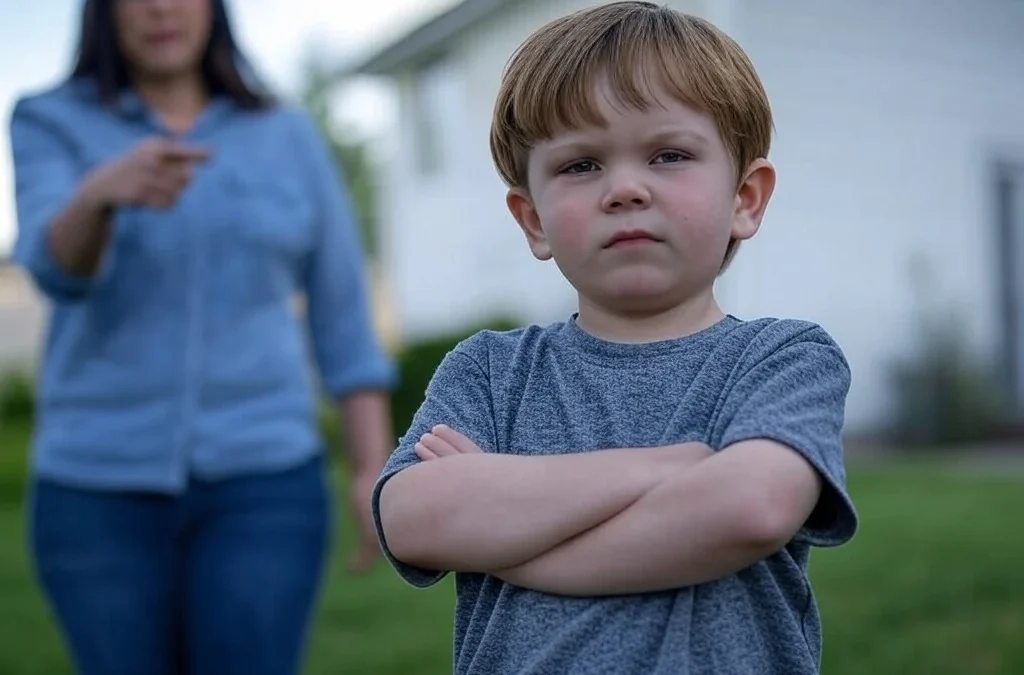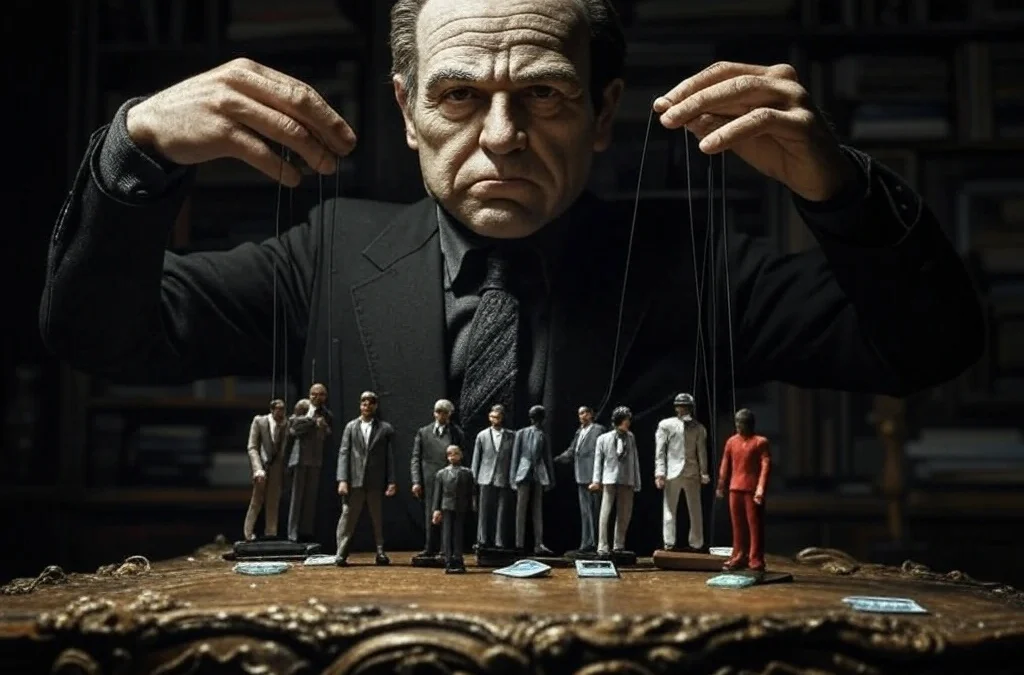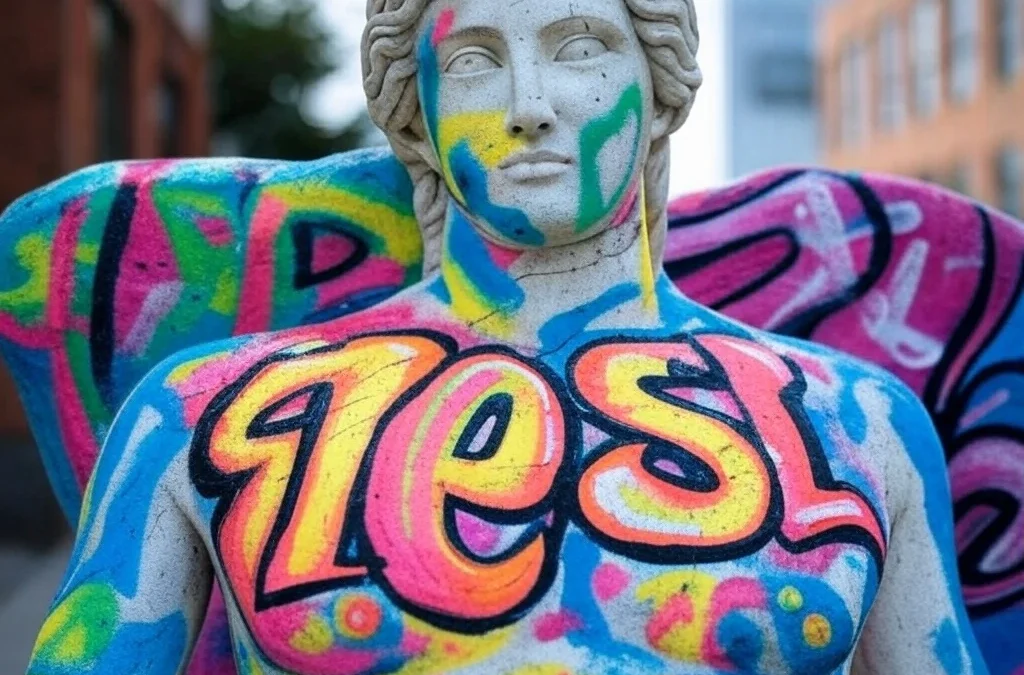Have you ever found yourself stuck between two choices, unable to decide which path to take? This feeling is known as ambivalence, and it’s more common than you might think. Imagine standing in front of your closet, trying to pick the perfect outfit for a big event. You love both options equally, but each choice comes with its own set of pros and cons. This indecision and mixed emotion are exactly what ambivalence is all about, and it happens to everyone at some point.
Ambivalence can pop up in various parts of our lives, from small daily decisions to major life changes. It’s that tug-of-war in your mind when you’re not sure which direction to go. For instance, you might feel excited about a new job offer but also hesitant to leave the comfort of your current position. This internal conflict is a normal part of being human, and recognizing it can help us understand our feelings better. In this article, we’ll explore 20 examples of ambivalence to shed light on how it plays out in different scenarios.
Understanding Ambivalence
Ambivalence is a psychological state where an individual experiences mixed or contradictory feelings about a particular person, object, or situation. This term is derived from the Latin roots “ambi,” meaning “both,” and “valentia,” meaning “strength.” Essentially, ambivalence involves holding two opposing attitudes or emotions simultaneously, which can lead to uncertainty or indecision.
In everyday life, ambivalence can manifest in various ways. For instance, a person might feel both love and resentment towards a friend, or they might simultaneously desire and fear a significant life change, such as moving to a new city or changing careers. This internal conflict can make decision-making challenging, as the individual may feel pulled in different directions.
Ambivalence is a common human experience and is considered a normal part of emotional processing. It can arise in response to complex situations where multiple outcomes or feelings are possible, and it often requires careful reflection to resolve. Understanding ambivalence can help individuals recognize their conflicting feelings and work towards making informed and balanced decisions.
In psychological terms, ambivalence is not merely indecision but rather a deeper, often subconscious, conflict between two equally strong impulses. It is a concept extensively studied in fields like psychology and sociology, as it can significantly impact personal relationships, mental health, and behavior.
The Best Examples of Ambivalence
Ambivalence, the coexistence of opposing feelings towards a subject or person, manifests in various ways. Here are twenty unique examples that capture this complex emotional state.
1. The Job Offer
Imagine receiving a job offer from a prestigious company. The salary is great, and the position is a step up in your career. However, the job requires relocating to a city far from family and friends. You feel excited about the opportunity, yet anxious about leaving your comfort zone. This mix of eagerness and hesitation captures ambivalence.
2. The Chocolate Cake
You love chocolate cake, but you’re also trying to stick to a healthy diet. When a friend offers you a slice, you’re torn. Part of you wants to indulge in the delicious treat, while another part feels guilty about straying from your diet plan. This internal conflict is a classic example of ambivalence.
3. The Uncertain Relationship
In a romantic relationship, you might feel both love and frustration towards your partner. You cherish the moments you share, yet certain habits or disagreements cause tension. This duality of emotions, where affection and irritation coexist, is a clear sign of ambivalence.
4. The Promotion Decision
As a manager, you need to decide whether to promote a hardworking employee. They are skilled and dedicated, but lack some interpersonal skills. You recognize their potential, but worry about their ability to lead a team. Your conflicting thoughts about their readiness highlight ambivalence.
5. The Move to a New City
Moving to a new city can be thrilling and daunting at the same time. You look forward to new experiences and opportunities, but fear the unknown and feel sad about leaving familiar places and people behind. This blend of excitement and apprehension embodies ambivalence.
6. The Environmental Dilemma
You care about the environment and want to contribute positively. Yet, you find yourself using a car for convenience, despite knowing public transport is more eco-friendly. This conflict between your values and actions is ambivalence in action.
7. The Complex Friendship
A close friend may have qualities you admire, but also traits that irritate you. You enjoy their company but often feel annoyed by their behavior. This mixture of admiration and irritation perfectly illustrates ambivalence.
8. The Technology Conundrum
Technology offers convenience and connectivity, yet it can also be intrusive and distracting. You appreciate the ease it brings to your life, but also worry about its impact on privacy and personal interaction. This push and pull is a form of ambivalence.
9. The Family Gathering
Family gatherings can be heartwarming but also stressful. You look forward to seeing loved ones, but dread potential conflicts or awkward conversations. This anticipation mixed with anxiety is a good example of ambivalence.
10. The Artistic Pursuit
Creating art is fulfilling, yet it can be frustrating when inspiration doesn’t come. You feel joy in expressing yourself, but also pressure to produce something meaningful. This blend of satisfaction and struggle captures the essence of ambivalence.
11. The Volunteer Dilemma
You’ve always wanted to volunteer at a local shelter, believing in the cause and eager to make a difference. However, your busy schedule makes it hard to commit time. You feel torn between your desire to contribute and the practical constraints of your daily life. This tug-of-war between intention and capability is a classic case of ambivalence.
Read more: 30 Best Moral Dilemma Examples
12. The Smartphone Debate
You love the convenience of your smartphone, which keeps you connected and organized. Yet, you’re concerned about its impact on your mental health and social interactions. The ease of technology versus the craving for a more mindful life illustrates ambivalence in the digital age.
13. The Bookstore Temptation
Walking into a bookstore, you feel the thrill of discovering new stories and knowledge. However, you also remember the unread books piling up at home. The excitement of potential new reads contrasts with the guilt of accumulating more books than you can handle, reflecting ambivalence.
14. The Early Morning Run
You set your alarm for an early morning run, knowing it benefits your health and mood. Yet, when the alarm goes off, your bed feels incredibly inviting, and you are tempted to skip the workout. The struggle between discipline and comfort is a daily dose of ambivalence.
15. The Gift-Giving Quandary
Choosing a gift for a loved one brings joy and stress. You want to find something meaningful, but fear it might not be appreciated. The balance between excitement in giving and anxiety about the recipient’s reaction highlights ambivalence.
16. The Online Shopping Cart
You fill your online shopping cart with items you desire, imagining how each purchase will enhance your life. Yet, a part of you hesitates, worrying about overspending and clutter. This hesitation between indulgence and restraint embodies ambivalence.
17. The Career Change
Contemplating a career change, you feel the pull of new challenges and opportunities. Yet, the security of your current job and the fear of the unknown hold you back. This blend of aspiration and caution reflects the essence of ambivalence in professional life.
18. The Social Media Post
Before posting on social media, you feel eager to share your thoughts and experiences. However, you also worry about judgment and the potential for misunderstanding. The desire for expression mixed with apprehension about feedback is a modern form of ambivalence.
19. The Vacation Planning
Planning a vacation excites you with visions of exploration and relaxation. Yet, the cost and logistics can be overwhelming, making you second-guess the decision. This oscillation between anticipation and practicality is a hallmark of ambivalence.
20. The Evening Class
Signing up for an evening class, you’re excited about learning something new and meeting people. However, as the day progresses, fatigue and the lure of a quiet night at home challenge your resolve. The conflict between personal growth and comfort is a vivid example of ambivalence.
Understanding Emotional Contradictions
Emotional contradictions are complex and can be confusing. They occur when a person experiences conflicting emotions about a particular situation, person, or decision. This is a common part of human experience and can manifest in many ways. For example, someone might feel both excitement and fear when starting a new job. These mixed feelings can be puzzling and might lead to a sense of unease.
The roots of these contradictions often lie in our values, beliefs, and past experiences. On one hand, a person might value security and stability, leading to anxiety about the unknown aspects of a new job. On the other hand, the same person might crave growth and new challenges, resulting in feelings of excitement. Recognizing these underlying factors can help individuals understand their emotional landscape better.
It’s essential to acknowledge that feeling contradictory emotions is perfectly normal. Rather than ignoring or suppressing these feelings, a helpful approach is to explore them. Journaling, talking with a friend, or even meditating can provide clarity. By giving space to these emotions, individuals can gain insights into what truly matters to them and make more informed decisions.
Furthermore, understanding emotional contradictions can enhance empathy. When we realize that others might also be experiencing conflicting feelings, it becomes easier to relate to their situations. This awareness can improve communication and strengthen relationships, as it encourages patience and compassion.
In summary, emotional contradictions are a natural part of life. Embracing them can lead to personal growth and deeper connections with others. By taking the time to explore these feelings, we can better understand ourselves and those around us.
What Is the Difference Between Ambivalence and Ambiguity?
Ambivalence and ambiguity are often confused because they both involve a sense of uncertainty. However, they are distinct concepts with unique meanings and applications.
Ambivalence refers to having mixed or contradictory feelings about something. Imagine being excited about starting a new job but also feeling anxious about the challenges ahead. This emotional conflict is a classic example of ambivalence. It’s about internal struggle – when two opposing feelings exist at the same time. This is common in personal relationships, career decisions, and even everyday choices like what to eat or wear.
Ambiguity, on the other hand, is more about unclear meaning. It occurs when something can be understood in multiple ways, leaving room for interpretation. For instance, if someone says, “I saw her duck,” you might wonder: Did they see her bird, or did she lower her body? Ambiguity often comes up in language, art, and communication. Unlike ambivalence, it’s not about emotions but rather about how information is presented or interpreted.
To put it simply, ambivalence is about feelings, while ambiguity is about clarity. Ambivalence is internal – something you feel. Ambiguity is external – something you encounter.
In real life, both can overlap. A friend’s vague comment could be ambiguous, leading to ambivalent feelings about what they really meant. Understanding the difference helps clarify thoughts and communicate better, making daily interactions smoother and less confusing.
Read also: 30 Ambiguity Examples & Definition
The Psychology of Ambivalence
Ambivalence is a psychological state where an individual experiences mixed feelings or contradictory ideas about a particular person, object, or situation. This concept is crucial in understanding human behavior because it reveals the complexity of our emotions and thoughts. When someone is ambivalent, they might feel both love and hate towards someone or something simultaneously. This duality can create inner conflict, leading to stress and indecision. Psychologists believe that ambivalence is a natural part of human experience, as it reflects the way we process and react to the world around us. It can affect decision-making, as the conflicting feelings make it difficult to choose one option over another. For example, a person might feel ambivalent about a job offer that provides a higher salary but requires relocation away from family. Understanding ambivalence can help individuals identify and manage their conflicting emotions, leading to better mental health and well-being.
Ambivalence in Decision Making: The Paradox of Choice
Ambivalence often plays a significant role in decision making. It can create a sense of paralysis when faced with multiple options. This feeling is sometimes called the paradox of choice. When people have too many options, they can feel overwhelmed. This can lead to indecision, stress, and dissatisfaction. Imagine standing in a cereal aisle with hundreds of boxes. Which one do you choose? This scenario is a common occurrence in our daily lives.
Ambivalence can also be seen in more significant life choices. Deciding on a career path or whether to move to a new city can be daunting. People may feel torn between different desires and values. They might want security but also crave adventure. These conflicting feelings can lead to ambivalence, making the decision process more complex. Yet, some argue that ambivalence can be beneficial. It encourages deeper reflection and consideration of all options.
Interestingly, technology has added another layer to this. With the internet, people have access to endless information and opinions. While this can be helpful, it often adds to the noise, making decisions even harder. Balancing between too much information and making a choice is a modern challenge. Understanding ambivalence in decision making can help individuals navigate these complex feelings. It can lead to more thoughtful and satisfying choices.
The Role of Ambivalence in Relationships
Ambivalence is not just a personal struggle; it often appears in relationships too. It can manifest in feelings of uncertainty about a partner or a friendship. One moment, you might feel deeply connected, and the next, you question the relationship. This push and pull can be confusing. It may cause tension and misunderstandings. People often fear that ambivalence signals a weak relationship. But that’s not always true.
Ambivalence can arise from unmet needs or unspoken expectations. It’s important to communicate these feelings. Open dialogue can help address the underlying causes of ambivalence. It can lead to a stronger, more resilient relationship. However, not everyone is comfortable discussing their ambivalent feelings. This silence can lead to resentment over time.
Social media also influences ambivalence in relationships. It exposes people to idealized images of love and friendship. Comparing real relationships to these images can fuel ambivalence. It’s crucial to remember that every relationship is unique. Accepting ambivalence as a natural part of relationships can be liberating. It allows for growth and change, rather than stagnation. Embracing the complexity of human connections can lead to deeper understanding and fulfillment.
Read also: Top 20 Anachronism Examples & Definition
The Most Popular on BitGlint

30 Defiance Examples & Meaning
Defiance is something most people experience at some point in life. You feel it when you say no to something that...

30 Cynicism Examples in Everyday Life & Definition
Cynicism is something most people have seen, heard, or even felt - but few stop to really think about what it means....

30 Ethical Dilemma Examples & Definition
Ethical dilemmas are not just topics for classrooms or philosophers. They happen to regular people every day - in...

100 Social Interaction Examples
In our increasingly digital world, the art of face-to-face social interaction remains essential for personal growth,...

100 Open-Ended Questions: Examples & Meaning
Open-ended questions are questions that invite explanation, opinion, or personal stories. Unlike yes-or-no questions,...

30 Regret Examples & What It Means
Regret is a common human emotion that almost everyone experiences at some point in their lives. It shapes our...

30 Transgression Examples & Definition
We all know what it feels like when someone “crosses the line.” Maybe they say something they shouldn't. Maybe they...
Get Inspired with BitGlint
The Latest
Hermaphroditus (Greek Mythology)
In Greek mythology, Hermaphroditus was born as the son of Hermes, the messenger god, and Aphrodite, the goddess of love and beauty. His name combines those of his parents—Hermes and Aphrodite. As the child of two Olympian deities, Hermaphroditus was extraordinarily...

30 Obedience Examples & What It Really Means
Obedience is a part of everyday life, whether we notice it or not. From following traffic laws to listening to a parent or teacher, we all experience it in one way or another. But what does obedience really mean? Why do people obey — and when should they? In this...
50 Things That Are Smart
We all know someone who seems naturally clever. Maybe they pick up new skills quickly or always have the right answer. Being smart isn't just about book smarts or having a high IQ. It shows up in many forms - from problem-solving and adapting to new situations to...
20 High Standards Examples & Definition
Have you ever noticed how some people always seem to excel at what they do, whether it's cooking a perfect meal or delivering a flawless presentation? This often comes down to having high standards. High standards push us to do our best and not settle for anything...

